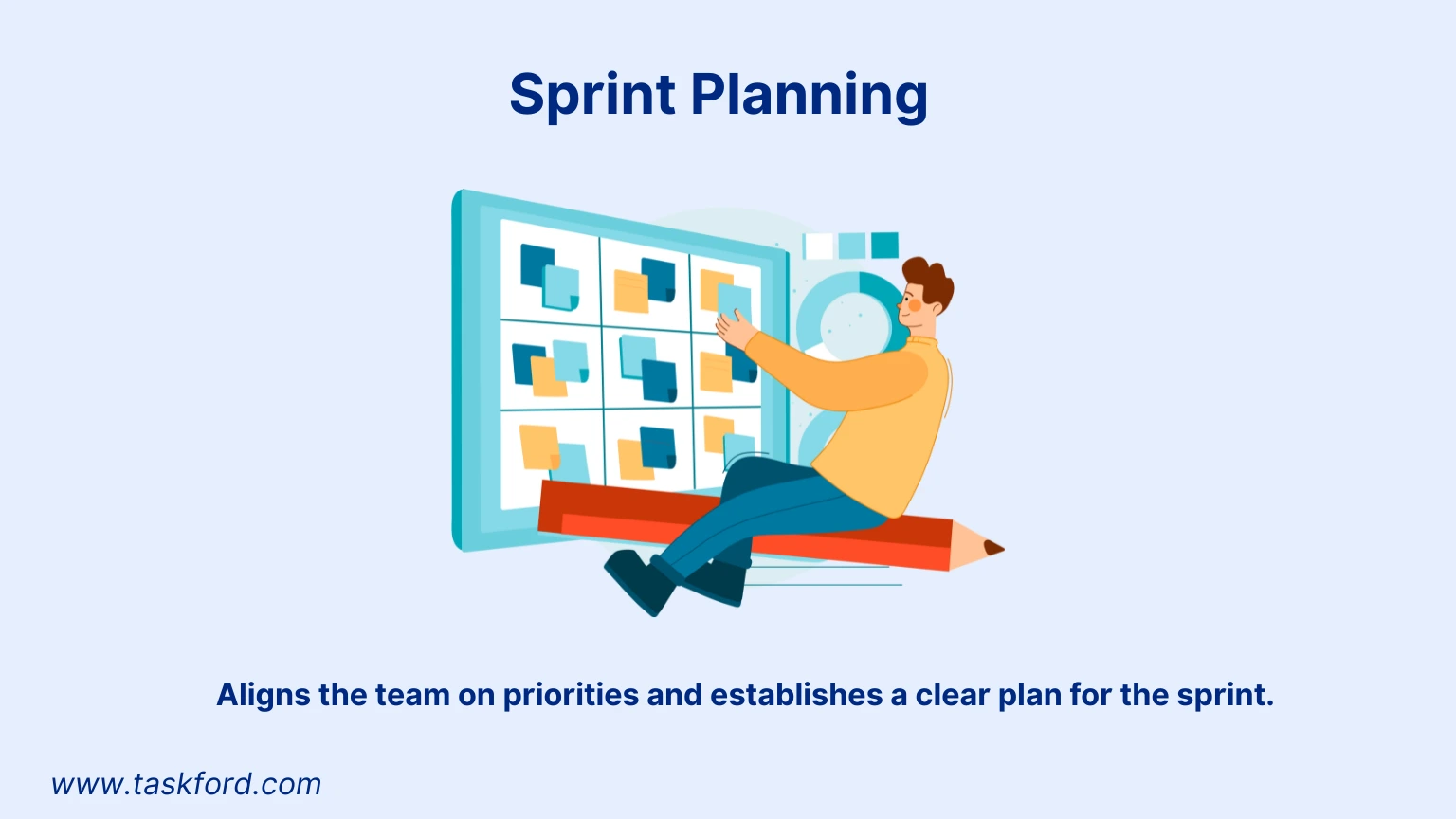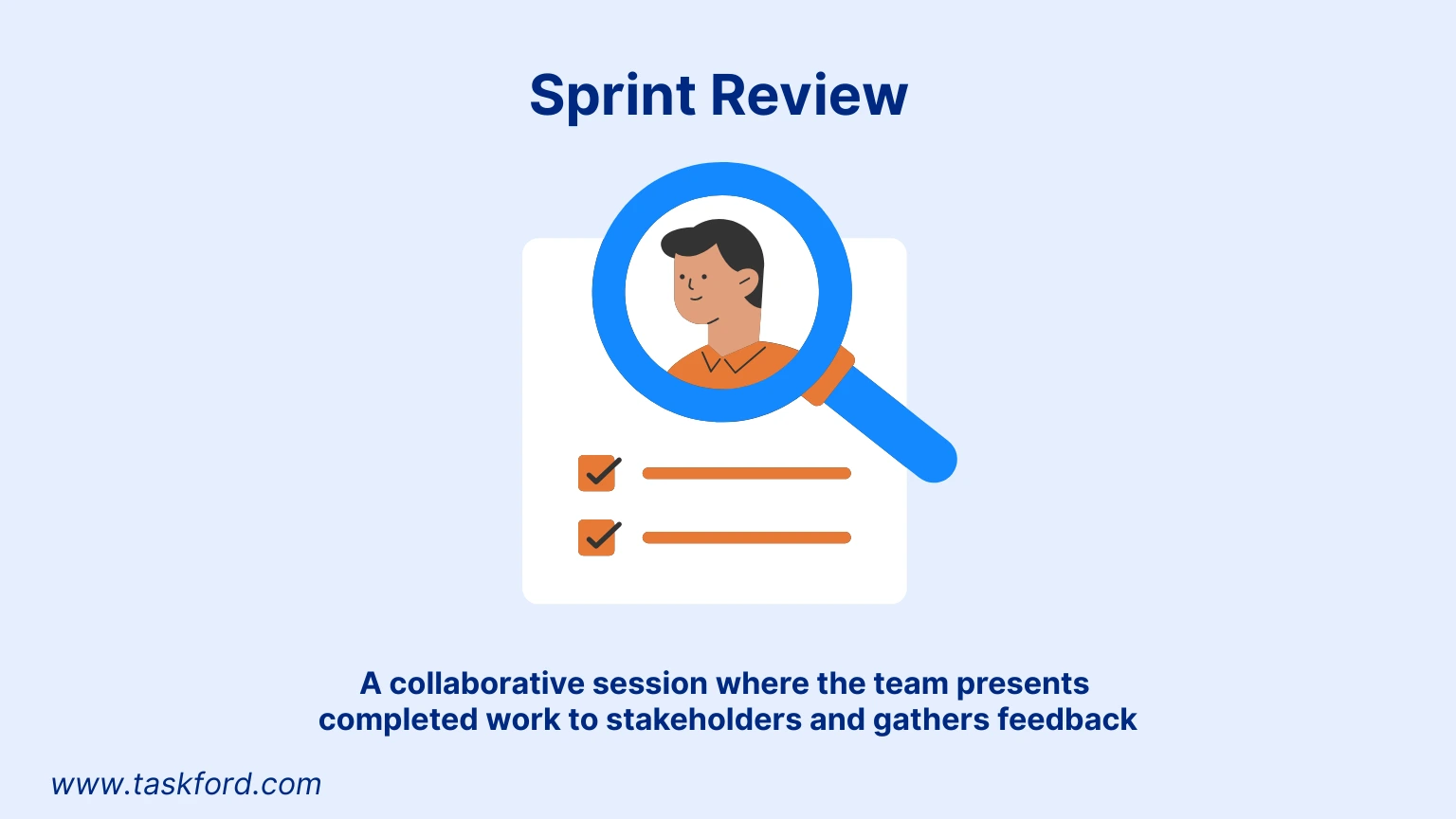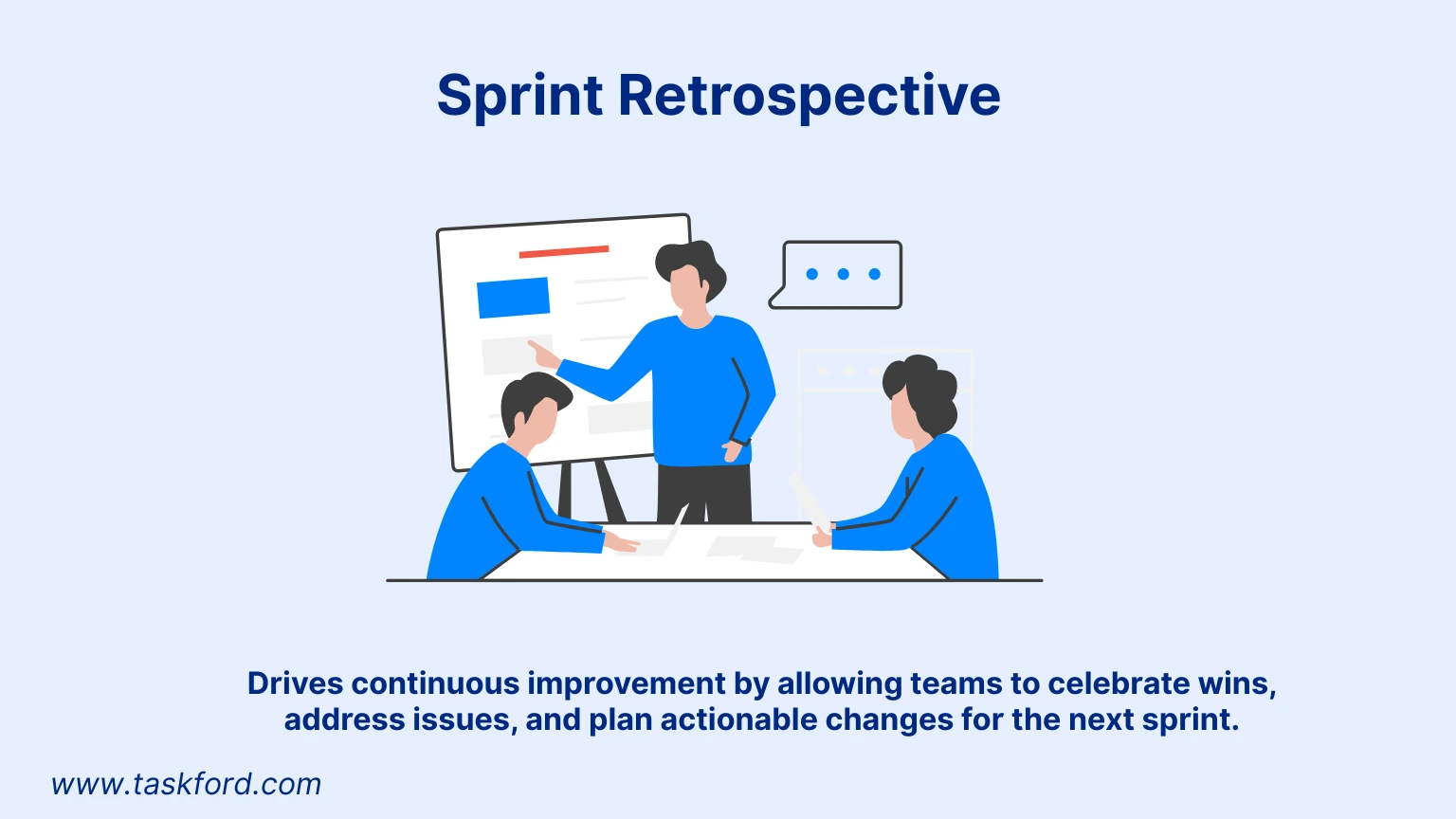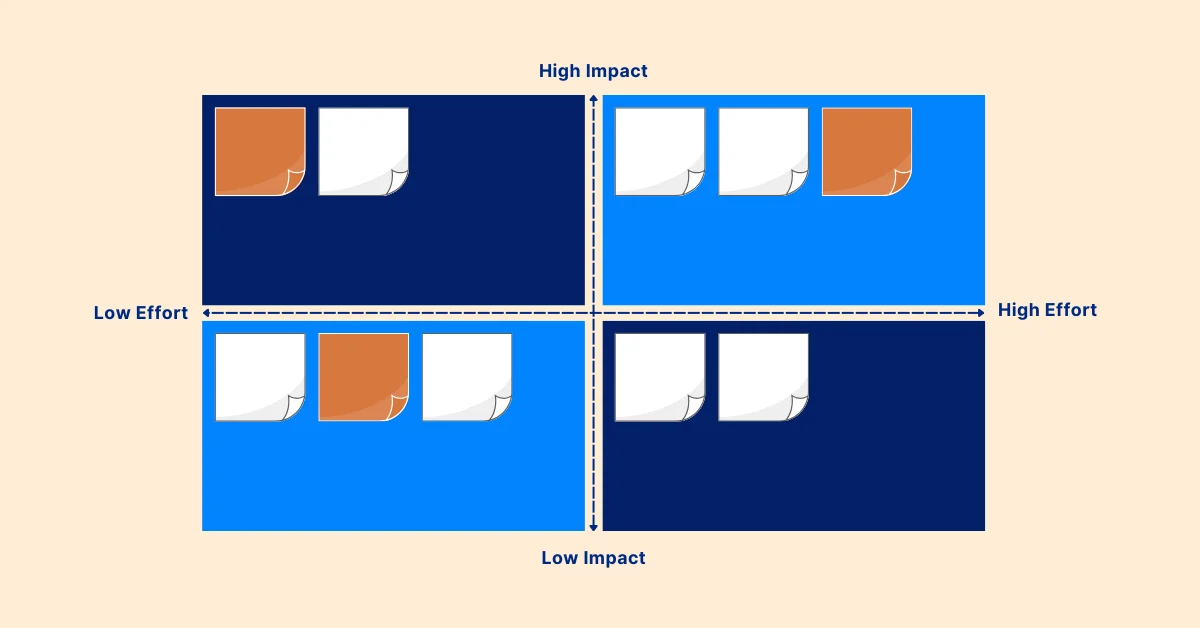The 4 Key Agile Ceremonies Every Team Should Master
Master the four key Agile ceremonies to improve collaboration, enhance project management, and deliver consistent value across every development cycle.
Agile methodologies have reshaped project management, emphasizing collaboration, adaptability, and iterative progress. Central to this approach are Agile ceremonies, structured practices that guide teams through planning, execution, and reflection. These rituals are not mere meetings, they’re purposeful events that drive alignment, transparency, and continuous improvement.
This blog explores the four key Agile ceremonies: Sprint Planning, Daily Standup, Sprint Review, and Sprint Retrospective. It will also details their purpose, best practices, and their critical role in effective project management. Whether you’re adopting Agile for the first time or refining your team’s process, mastering these ceremonies will elevate your ability to deliver value and manage projects successfully.
What Is Project Management?
Project management involves planning, executing, and completing projects to achieve specific objectives within constraints like time, budget, and resources. In Agile, project management emphasizes iterative progress, collaboration, and adaptability, with ceremonies like Sprint Planning and Sprint Reviews playing a central role. Tools like TaskFord enhance these processes by providing task tracking and collaboration features.
For a deeper understanding of project management and how to optimize it, explore our comprehensive Project Management Guide
What Is an Agile Ceremony?
An Agile ceremony is a structured, recurring event in frameworks like Scrum or Kanban. These time-boxed meetings facilitate collaboration, planning, and reflection to keep teams aligned with project goals.
Key Characteristics
- Purposeful Structure: Each ceremony has a specific objective, such as planning or reviewing work.
- Team-Centric: Involves team members and stakeholders to ensure transparency.
- Iterative Focus: Supports iterative progress, a core principle of Agile project management.
Role in Projects
Ceremonies like Sprint Planning, Daily Standups, Sprint Reviews, and Sprint Retrospectives enable teams to manage tasks efficiently, track performance, and incorporate feedback. They foster communication and continuous improvement, driving project success.
Why Agile Ceremonies Matter in Project Management
Agile ceremonies are the backbone of frameworks like Scrum, creating a rhythm for teams to plan, collaborate, and adapt. They provide structure in project management, ensuring clarity and flexibility in complex projects.
Benefits for Project Management
- Enhanced Clarity: Ceremonies align teams with project goals, reducing confusion and miscommunication.
- Improved Adaptability: They allow teams to respond to changes quickly, keeping projects on track.
- Stronger Collaboration: Regular interactions foster teamwork and stakeholder engagement.
Unlike traditional project management, which often relies on rigid plans, Agile ceremonies break projects into manageable increments. This iterative approach promotes accountability and ensures consistent delivery of value.
Impact on Teams
By integrating ceremonies, teams can prioritize tasks effectively, address challenges promptly, and maintain focus on outcomes. These practices create a cycle of planning, execution, feedback, and improvement, making them essential for successful project management.
1. Sprint Planning: Setting the Stage for Success
Sprint Planning kicks off each sprint, a fixed period (typically two to four weeks) where teams commit to delivering specific tasks or features. This ceremony involves the product owner, Scrum Master, and development team, who collaborate to define the sprint goal and select items from the product backlog.

Purpose of Sprint Planning
Sprint Planning aligns the team on priorities and establishes a clear plan for the sprint. The product owner clarifies requirements, the team estimates effort, and the Scrum Master facilitates to keep discussions focused. The result is a sprint backlog that outlines the work to be completed and a shared commitment to the sprint goal.
Best Practices for Effective Sprint Planning
- Set a Clear Sprint Goal: A specific goal, such as “Implement user authentication for the mobile app,” keeps the team focused and aligned.
- Use Estimation Tools: Techniques like Planning Poker or story points help teams gauge task complexity and avoid overcommitting.
- Engage the Entire Team: Encourage input from all members to uncover risks and ensure realistic planning.
- Time-Box the Session: For a two-week sprint, limit the Sprint Planning meeting to two hours to keep the team energized and prevent lengthy discussions.
Common Pitfalls to Avoid
Mistakes in Sprint Planning can derail a sprint. Here are key issues to watch for:
- Overcommitting Tasks: Taking on too much work leads to incomplete deliverables or burnout.
- Unrefined Backlog: Unclear requirements cause confusion during planning.
- How to Fix Them: Prioritize backlog grooming before the session and involve stakeholders early to clarify expectations.
Sprint Planning is a cornerstone of project management, ensuring teams start each sprint with clarity and purpose.
(Learn more: Agile Project Management Sprint Cycle)
2. Daily Standup: Keeping Teams Aligned and Agile
The Daily Standup, or Daily Scrum, is a brief, daily meeting (typically 15 minutes) where team members share updates, identify obstacles, and align on the sprint goal. It’s a critical touchpoint for maintaining momentum and addressing issues quickly.

Purpose of the Daily Standup
The Daily Standup fosters transparency and collaboration, ensuring everyone understands progress and challenges. In project management, this ceremony helps teams stay on track, resolve blockers promptly, and adapt plans to meet deadlines and deliverables.
Best Practices for Daily Standups
- Follow the Three Questions: Each member answers: What did I accomplish yesterday? What’s my focus today? Are there any blockers? This keeps updates concise and relevant.
- Keep It Standing: Standing meetings (in-person or virtual) encourage brevity and focus.
- Avoid Problem-Solving: Save detailed discussions for after the standup to respect time constraints.
- Rotate Facilitation: While the Scrum Master often leads, rotating this role can boost engagement and shared responsibility.
Common Pitfalls to Avoid
Daily Standups can lose effectiveness if not managed well. Common issues include:
- Becoming a Status Report: Turning into a manager-focused update undermines collaboration.
- Running Too Long: Extended meetings disrupt productivity.
- How to Fix Them: Enforce a timer and limit participation to team members to maintain focus.
The Daily Standup is a vital tool in project management, enabling teams to maintain alignment and address challenges in real time.
3. Sprint Review: Showcasing Progress and Gathering Feedback
Held at the end of a sprint, the Sprint Review is a collaborative session where the team presents completed work to stakeholders and gathers feedback. It includes the product owner, Scrum Master, development team, and stakeholders like clients or end-users.

Purpose of the Sprint Review
The Sprint Review validates that the team’s work aligns with stakeholder expectations and delivers value. It’s an opportunity to demonstrate functional increments, discuss challenges, and refine the product backlog based on feedback, ensuring the project stays on course.
Best Practices for Sprint Reviews
- Showcase Working Deliverables: Present live demos of features, such as a new app interface, rather than slides or reports.
- Engage Stakeholders: Encourage active participation by asking for specific, actionable feedback.
- Keep It Interactive: Use hands-on demos or Q&A sessions to make the review engaging and productive.
- Capture Feedback: Assign a team member to document stakeholder input for future backlog refinement.
Common Pitfalls to Avoid
Sprint Reviews can falter without proper execution. Watch for these issues:
- Overly Formal Presentations: These stifle discussion and engagement.
- Poor Preparation: Incomplete demos or unclear explanations confuse stakeholders.
- How to Fix Them: Rehearse demos and ensure the team is ready to address questions.
The Sprint Review is a critical feedback loop in project management, ensuring deliverables meet stakeholder needs and project goals.
4. Sprint Retrospective: Reflecting for Continuous Improvement
The Sprint Retrospective is the final ceremony, where the team reflects on the sprint to identify successes, challenges, and opportunities forImprovement. This introspective session is key to fostering a culture of growth and adaptability.

Purpose of the Sprint Retrospective
The retrospective drives continuous improvement by allowing teams to celebrate wins, address issues, and plan actionable changes for the next sprint. In project management, it ensures teams learn from each cycle, enhancing efficiency and collaboration over time.
Best Practices for Sprint Retrospectives
- Foster a Safe Environment: Create a blame-free space where team members feel comfortable sharing honest feedback.
- Use Structured Frameworks: Formats like “Start, Stop, Continue” or “What Went Well, What Didn’t” guide productive discussions.
- Prioritize Actionable Outcomes: Focus on one or two specific improvements, such as better backlog refinement or clearer communication.
- Keep It Engaging: Use creative activities, like brainstorming with sticky notes or drawing sprint timelines, to maintain energy.
Common Pitfalls to Avoid
Retrospectives can lose impact if mismanaged. Key issues include:
- Focusing Only on Negatives: This can demoralize the team and reduce morale.
- Ignoring Action Items: Failing to follow through erodes trust.
- How to Fix Them: Balance positive and constructive feedback, and assign owners to action items with follow-up in the next retrospective.
The Sprint Retrospective is essential for building high-performing teams, driving continuous improvement in project management.
Integrating Agile Ceremonies into Your Project Management Strategy
To maximize the impact of Agile ceremonies, weave them into your project management approach:
- Align with Project Objectives: Ensure each ceremony supports the project’s goals, whether delivering a product feature or improving team efficiency.
- Leverage Tools: Use an advanced project management and resource planning platform like TaskFord to manage sprint backlogs, track progress, and document feedback from reviews and retrospectives.
- Invest in Training: Provide Agile training to ensure team members understand and execute ceremonies effectively.
- Customize to Context: Adapt ceremonies to your team’s size, industry, or project complexity, such as using virtual tools for remote standups.
Conclusion: The Impact of Mastering Agile Ceremonies
Mastering Agile ceremonies elevates project management by fostering collaboration, clarity, and continuous improvement. Sprint Planning sets clear goals, Daily Standups maintain momentum, Sprint Reviews align with stakeholder needs, and Sprint Retrospectives drive growth. With tools like TaskFord, teams can manage tasks and collaborate effectively, delivering consistent value. Start implementing these ceremonies with purpose to transform your projects.
Learn more
- Agile Project Management - The Basics For Beginners
- Agile Project Management Sprint Cycle - From Planning to Retrospective
- A Full Breakdown of Kanban Project Management: All You Need To Know
Making work simpler,
smarter, and more connected
Join our waitlist and be notified first.

Related Blog
Subscribe for Expert Tips
Unlock expert insights and stay ahead with TaskFord. Sign up now to receive valuable tips, strategies, and updates directly in your inbox.






